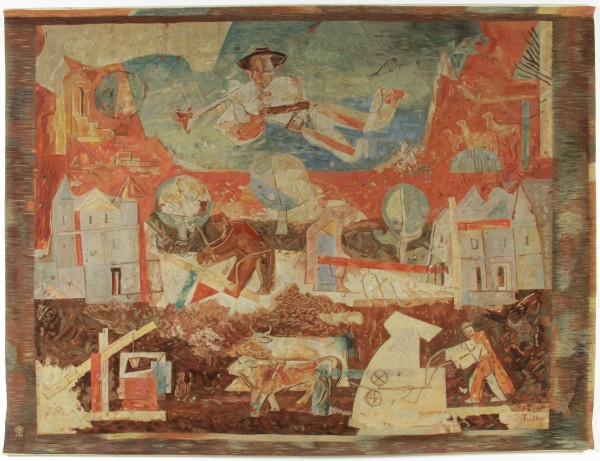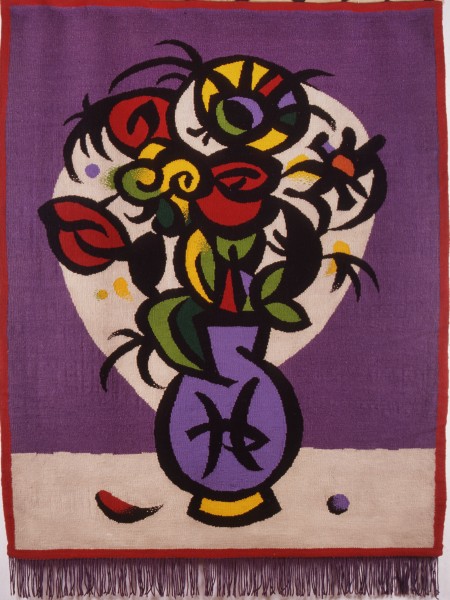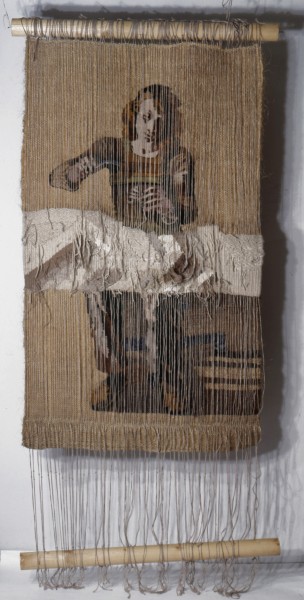The textile collection originated in its current form with the merging of two separate wholes. The first was the Textile Collection of the SNG Department of Applied Art and Design and the second collection was formed gradually from the 1950s as an alternative variant within the framework of the Collection of Modern Painting. The Gobelin tapestry and art protis, which formed the basis of this collection, were understood here as a specific material kind of painting, a hanging painting. At first, the collection contained works woven according to the artistic design by the most renowned Slovak artists (Ľudovít Fulla, Janko Alexy, Ernest Zmeták) in specialized workshops in Jindřichův Hradec, Valašské Meziříčí and in Ústředí uměleckých řemesel (Arts and Crafts Centre) in Prague. The fact that Peter Matejka became the head of the Department of Monumental Painting was of crucial significance for the development of the artist’s work in Slovakia.
In the 1960s, the collection gained not only the works of the students of Matejka’s school implemented by the popular and today almost forgotten technique of art protis, but the first Gobelin tapestries by Karol Baron and Juraj Krén were also created. Furthermore, at the end of the 1960s, the first tapestries woven by Mária Rudavská, Katarína Šujanová, Silvia Fedorová, Lýdia Jergušová-Vydarená, Eva Mináriková-Cisárová, Katarína Zavarská, were among the most valuable acquisitions of the new Textile Collection, which originated in 1974. In the past, the extensive bobbin lace collection representing the life work of Elena Holéczyová, which was based on the classical home technique of bobbin lace, was frequently used in exhibitions and publications. She brought about the successful modern transposition of a marginally used figural motif, understood especially as an ornament, in the centre of the visual plot, so that the figural motif became the central element. Mária Danielová, whose work enriched the collection in the second half of the 1980s, continued in the bobbin lace technique in minimizing compositions and abstracting an almost monochromatic design. The new ambitions of tapestry (detached from the wall, expanded into space) are represented by the works of Remígia Litwinowitzová and Júlia Sabová, which document the new situation in this medium. The experimental line, and not only in the spatial expansiveness of tapestry, but also in its material and functional foundation, is represented by the works by Karol Pichler and Jozef Bajus.
Curato of the Textile Collectionr: Viera Kleinová



